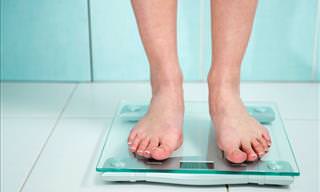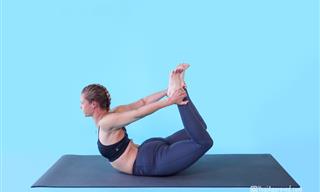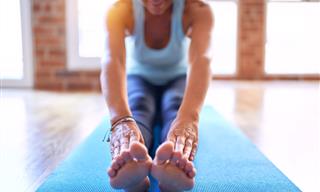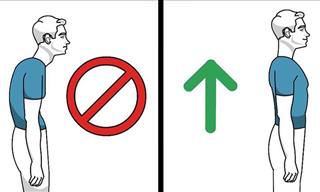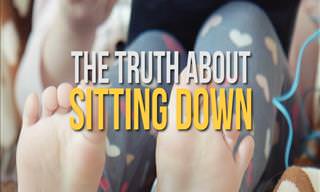How does poor posture harm our bodies?
Besides the fact that poor posture makes our bodies look less attractive, it also harms our health in a variety of ways that you may have never imagined. When we sit bent for long hours in front of a computer or stand wrong, we actually twist our spine, which can adversely affect blood flow to the neck area which leads to the head and brain. This disturbance can cause headaches, and at advanced ages, it can even put you at risk of a stroke. Our rib cage is also affected by this hunching and may put pressure on the heart and lungs, thus causing poor functioning of the three most important organs in our body - the brain, lungs, and heart.
In addition, poor posture causes the body to weaken and tire more quickly. The spinal vertebrae exert pressure on each other, a condition that not only causes pain but can also affect our muscles, bones, and joints and put pressure on them too, causing them to weaken faster over time. As a result, the entire body's range of motion may be reduced, and the risk of having a disc herniation increases significantly.
What causes poor posture?
Although we’ve become accustomed to thinking that prolonged sitting is the main reason for poor posture and damage to the back structure, laziness and modern lifestyle are not the only ones to blame. Here are all the factors that affect the structure of your back and posture, and although some of them are not under our full control, most of them stem from choices we make in life:
- Wearing shoes that don’t support the back and knees
- Sitting on a chair which is too high or too low
- Feelings of stress and anxiety
- Obesity
- Hunching over to get closer to the computer screen
- Genetics
- Accidents or injuries
- A mattress that doesn’t support the back
- Foot problems
- Low self-esteem
- Poor waist support during sitting (usually due to slouched sitting as shown in the following picture)
To check if you suffer from poor posture, here is a quick test you can do right now:
1. Stand with your back against the wall while leaning your heads against it.
2. Place your heels 6 inches from the wall, while your buttocks and shoulder blades touch it.
3. Measure the space between your neck and the wall. If it is larger than 2 inches, this indicates that you suffer from poor posture and that your spine is curving.
How to maintain proper posture in every situation
There are a variety of ways you can maintain proper posture and even improve your condition if your posture is already impaired. One of the most effective ones, which is important for anyone sitting in front of the computer screen for long hours a day, is the series of exercises offered by Dr. Mike Brett – a chiropractor from Australia - which are supposed to "activate" the backbone nerves that create a hump. Click here to learn about three exercises that’ll fix your posture in just one month.
Beyond that, you can make a few small changes in the way you do things to maintain proper posture throughout the day and prevent further damage to your spine.
Sitting:
- Keep your head straight without tilting it down or up.
- Make sure your shoulders don’t fall forward and make sure they remain loose and not tense.
- Make sure your knees are lower than your thighs and avoid crossing your legs (this also damages the blood flow in your legs).
- Keep your feet flat on the floor and avoid pushing them under your chair.
- Don’t try to keep your back flat as you sit - let the chair you sit on support your back.
- Avoid working in front of the computer screen without proper arm-support. The most important thing is to provide wrist support, so you can purchase support pads for your keyboard or mouse.
Standing:
- Keep your back and shoulders aligned and don’t try to push your chest forward - keep it perpendicular to the ground.
- Bend your knees slightly to reduce pressure on your hips and back.
- Wear shoes that provide appropriate support for your feet, knees, and back. Don’t wear high heels if you know you’ll have to stand for a long time with them on.
- Don’t stand in the same position for too long. Move your body every few minutes and move your weight around.
Walking:
- Keep your chin parallel to the ground and avoid hunching your shoulders and looking down at your feet. Instead, just look straight.
- Keep your stomach and buttocks aligned with the rest of your body.
- At each step, touch the ground first with the heel, and only with your toes. Don’t drag your feet on the floor.
Running:
- Keep your head up and look forward, not down at your feet.
- Avoid bending your shoulders or waist and keep your hands relaxed and your elbows flexed at 90 degrees.
- Do not lift your knees too high. Run in a way that feels natural to you, and not in a way that you feel will improve the use of your leg muscles.
- At each step, touch the ground first with the middle part of the foot, and only then put your toes down.
Sleeping:
- Change to a hard mattress that provides support for your back.
- Use as few pillows as possible, avoiding a pile of pillows that cause the neck to bend unnaturally.
- Stretch before bedtime to soothe stressed muscles that may affect your sleeping position.
- Do not sleep on your stomach, as this may put pressure on your spine. Instead, sleep on your side with a pillow between your legs or on your back with a pillow under your knees. Doing this will support your hips and keep them in line with your spine.
If you do the exercises mentioned above and adopt the recommended habits, you can improve your posture and prevent futures injuries or diseases that may attack. It may take some time to improve your posture, but once you realize how wonderful your body works and feels, you’ll certainly feel happier and healthier.
image source: John, SanDiego PersonalInjuryA
 Go to BabaMail
Go to BabaMail





